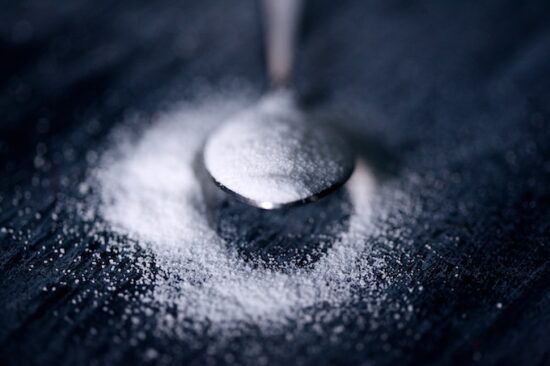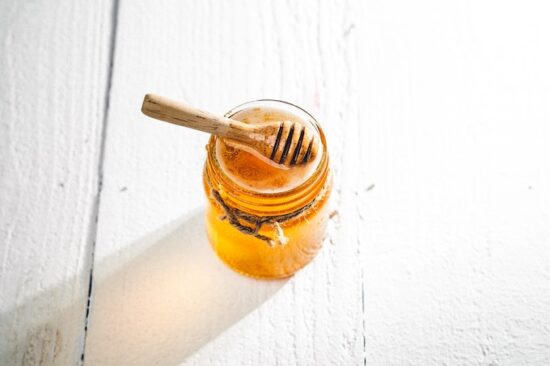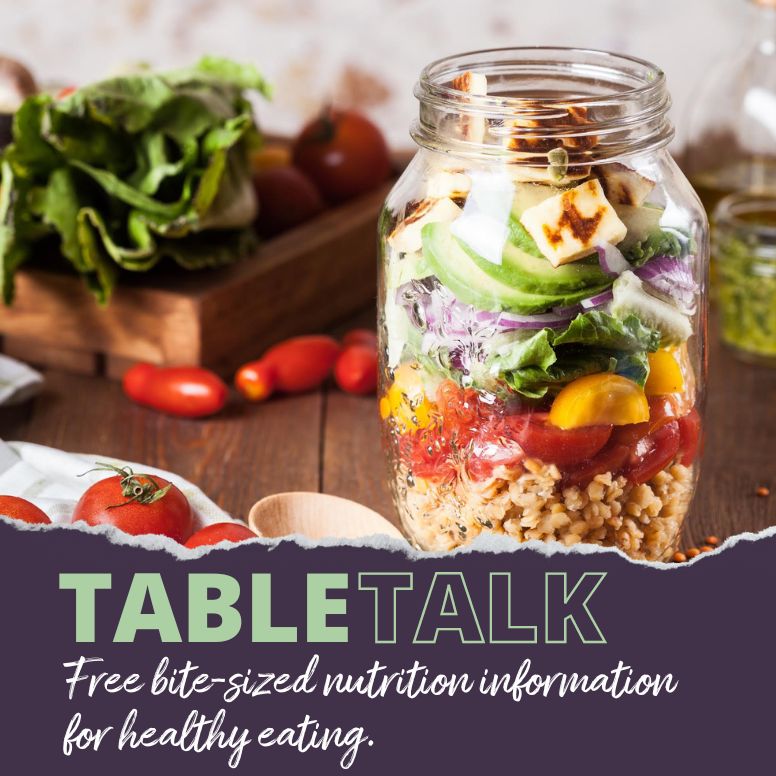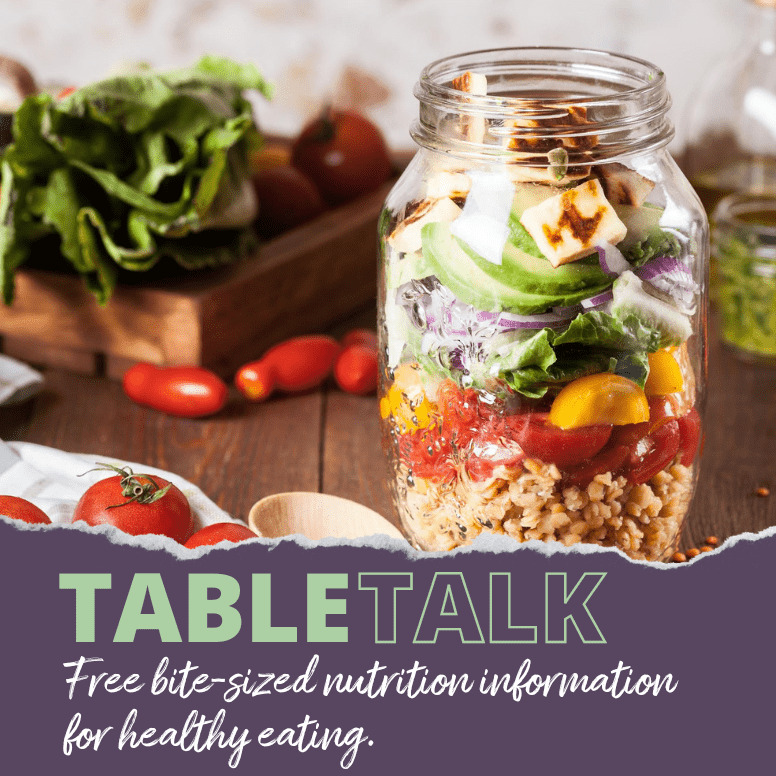A detailed look at the wide variety of sugar substitutes on the market today. Learn about their safety, benefits, risks, health impact and how to use them.

Hi friends!
This ultimate guide to sugar substitutes post covers a lot of the questions I get frequently as a Registered Dietitian about sugar and its alternatives.
If you’re interested in learning more about other nutrition-related topics, be sure to check out:
Sugar Substitutes
Sugar Substitutes have been on the rise in recent years. Due to the increased incidence of diabetes, obesity, and other chronic diseases across the United States, consumers are now more aware than ever of the adverse health outcome associated with high refined sugar intake.
Sugar substitutes have been said to suppress hunger and even aid in weight loss. However, increasing research has shown sugar substitutes may actually have the opposite effect leading to increased cravings, higher caloric intake, weight gain, and even digestive problems.
With so much conflicting information, there has to be a better way to understand what sugar substitutes are right for you if you want to use them.
Let’s break down what sugar substitutes are and how to use them safely.
What are Sugar Substitutes?
Sugar substitutes are used to replace regular cane sugar. Some have fewer calories than sugar or none at all. They can be synthetically made or natural, meaning they have derived from natural sources such as a plant.
Artificial sweeteners are chemically synthesized substances used to sweeten food and beverages. They are also called nonnutritive sweeteners or high-intensity sweeteners.
Sugar alcohols are a group of carbohydrates with a chemical structure that contains both sugar and alcohol molecules. This combination creates a similar taste to sugar with fewer calories that do not spike your blood sugar when consumed.
Sugar substitutes that are made synthetically include substitutes like xylitol or erythritol, while natural sugar substitutes include agave nectar, stevia, or monk fruit.
Are Sugar Substitutes Safe?
Sugar substitutes are regulated by the FDA. You can read more about FDA-approved high-intensity sweeteners here. Exceptions include substitutes classified as Generally Recognized as Safe (GRAS). These substitutes have been approved by experts to be safe for their intended use and do not undergo the new food additive approval process.
Most sugar substitutes also have an “Acceptable Daily Intake” (ADI) determined by the FDA. This intake should not be exceeded due to the risk of toxicity levels which can have side effects such as nausea, bloating, gas, or diarrhea.
Most ADIs are quite high and would require very high consumption to reach. However, not all sugar substitutes have a know ADI. This is the case for monk fruit. More research is needed to determine these levels.

How do Sugar Substitutes Compare to Sugar?
Table sugar (or sucrose), is a type of sugar. Sugar is a carbohydrate and comes in several different types such as Fructose, Galactose, Glucose, Lactose, and Matlose. Sugar substitutes are often as sweet or sweeter than sugar.
Sugar (sucrose) contains 4 calories per gram and 1 tsp of sugar is about 20 calories. Sugar substitutes can be up to 300 times sweeter than sugar and many (but not all!) contain fewer calories than sugar. Options like honey, maple syrup, or agave contain slightly higher calories than sugar.

Types of Sugar Substitutes
Let’s take a look at some of the most common sugar substitutes as well as some natural alternatives like honey and maple syrup to learn more about this:
Stevia
Stevia comes from the Stevia plant native to South America. It has been used for almost 1,500 years as a natural sweetener to beverages by indigenous tribes. However, it was first used as a sweetener in Japan in the 1970s. Stevia extract is made by steeping stevia plant leaves to extract the sweet compounds.
Commercial stevia extract contains 11 major steviol glycosides which provide its overwhelming sweet flavor. Depending on the blend, stevia can be up to 300 times sweeter than sugar and provides zero calories. There are many different forms of stevia on the market today such as Truvia, Prue Via, Stevia in the Raw, and Sweet Leaf, and vary in sweetness.
Stevia-sweetened options may be a better choice for someone with Diabetes Mellitus as some research supports that stevia may reduce blood pressure and blood glucose levels.
However, this may interfere with glucose control and homeostasis in the body. While it may provide some benefits, this interference may lead to consuming more calories as the body does not process stevia.
Likewise, stevia may also have adverse effects on the gut microbial flora which can affect metabolism. According to the FDA, daily intake of stevia should not exceed more than 4mg per kilogram of body weight, equivalent to 1.8 mg per pound of body weight.
Stevia can be used in a variety of ways such as sweetening most beverages or even in baked goods. 1 tsp of stevia can replace 1 cup of sugar. For many people, stevia can leave a bitter after-taste or have a different mouth feel than things made with sugar.
Xylitol
Xylitol is considered a sugar alcohol and is found naturally (in very small amounts) in fruit and vegetables. It is made from xylan (also called hemicellulose) from hardwood trees or corn cobs. It is commonly found in chewing gums, candies, and mints.
This sugar alternative may also be helpful in Diabetes treatment as it has little to no impact on blood sugar levels. Xylitol may also be helpful in weight loss and the prevention of weight gain.
However, there is some research supporting that Xylitol may have a negative effect on the GI tract. When consumed in excessive amounts, it can cause bloating, gas, and diarrhea.
Xylitol is almost 40% sweeter than sugar and is lower in calories at only 2.4 calories per gram. If you are baking with this sugar alternative, be sure NOT to give any to your dog as it is highly toxic to them!
Erythritol
Erythritol is another popular sugar alcohol used to replace sugar. It is made commercially by fermenting corn. While research supports that it may help manage blood sugar levels and treatment of Diabetes, recent studies have found possible dangers to consuming this sugar alternative.
A recent study found erythritol intake was associated with an increased risk of “adverse cardiovascular events” such as heart attack or stroke. Likewise, another study found plasma levels of erythritol were associated with obesity and cardiometabolic disease.
Erythritol is also a common additive in other sugar alternatives such as Truvia or Splenda Naturals Stevia. It is also common in low-sugar and sugar-free options such as ice cream, candies, chocolate, and protein bars.
Excess consumption of erythritol can cause bloating, gas, diarrhea, and nausea and many believe more research is needed to assess the safety of consuming this sugar alternative.
Monk Fruit Sweetener
Monk Fruit sweetener has been growing in popularity since its approval as a sugar alternative in 2010. Monk fruit sweeteners are extracted from the monk fruit which is a native plant to Southern China. The sweetener is made by extracting the morgroside, the sweetest part of the fruit.
Monk fruit sweeteners can be up to 250 times sweeter than sugar and contain zero calories. It is considered Generally Recognized as Safe (GRAS) by the USDA, however, there is still limited research on toxicity levels and side effects of monk fruit sweetener.
Research studies have found that morgroside extracts have potential anti-oxidant, anti-inflammatory, and even possible anti-cancer properties. Likewise, there is some research that monk fruit sweeteners may aid in reducing blood sugar levels. However, due to limited research on its safety, many recommend using monk fruit in moderation.
Monk fruit sweetener can be used in a variety of foods and drinks. It can be used to sweeten tea or coffee, salad dressings, oatmeal or hot cereals, or yogurt. It can also be used in baking.
Agave Nectar
Agave Nectar originates from the sap of the Agave plant native to central and northern America, but primarily Mexico. Agave nectar is a vegan sugar alternative and a good source of minerals, vitamins, and polyphenols such as Vitamin C, potassium, magnesium, and phosphorus. The Agavins present in the agave are even considered a prebiotic, which is good for your healthy gut microbiota.
Agave nectar is primarily made up of sugar fructose, which gives it a much sweeter taste than sugar. However, agave nectar is not calorie free with 21 calories per teaspoon. Its high sugar content may not be favorable to those with Diabetes.
Agave nectar provides potential nutritional benefits due to its vitamin and mineral content, but, when used in excess (like sugar) it can have potential risks. Excess consumption of high fructose sugar is associated with Non-alcoholic Fatty Liver Disease, cardiovascular risk, and insulin resistance.
Agave nectar can be part of your diet, but moderation of both sugar and sugar alternatives is key. It can be used to sweeten drinks, on top of waffles or pancakes, or in baking when liquid sweeteners are used.

Honey
Honey is made by honeybees from the nectar of flowers. It had been used by humans for over 5,000 years dating back to ancient Roman, Mayan, and Babylonian times. In fact, there are over 300 types of honey recognized today!
Honey has been used for many purposes in history. It is rich in flavonoids and polyphenols which contribute to its antioxidant, antimicrobial, anti-inflammatory, and anticancer properties.
Honey has protective benefits against Diabetes Mellitus, cancers, asthma, cardiovascular disease, and neurological diseases. Studies had supported that honey also reduces blood lipid and C-Reacitve Protein (CRP) levels, which are associated with increased inflammation in the body.
Honey is slightly higher in fructose than sugar, making it sweeter in taste. It is higher in calories as well at 22 calories per teaspoon compared to sugar. Honey can still be enjoyed in moderation as it has many nutritional benefits.
It is also easy to store as it does not need to be refrigerated. Honey is best in a cool dry place. It can also be eaten raw or pasteurized. Raw honey is straight from the honeycomb and filtered to remove pollen and beeswax but not pasteurized.
Pasteurized honey is filtered using high heat which helps increase shelf life. However, the pasteurization process does reduce some of the antioxidant and nutrient contents present in honey.
Honey can be enjoyed in a variety of ways. It can be added to tea, coffee, salad dressings, yogurt, or oatmeal. Honey also works well in baking, especially bread, muffins, cakes, or pies due to its added moisture.
Maple Syrup
Maple syrup comes from the sap of sugar maple trees. It is made through a process of boiling and concentrating the sap to make this famous sweet syrup.
It is high in minerals, antioxidants, and phytochemicals such as zinc, manganese, calcium, and potassium. In fact, maple syrup has up to 24 different antioxidants! These antioxidants provide anti-inflammatory benefits and reduce oxidative stress by reducing free radical damage.
Maple syrup is slightly sweeter than sugar but comparable in calories at 17 calories per gram. It is lower on the glycemic index, meaning it does not spike your blood sugar as quickly. However, maple syrup is still a simple sugar and should be consumed in moderation.
Due to its sugar content, maple syrup may not be favorable to those with diabetes. But, it may be a better alternative than other high-sugar products due to its nutritive properties. When choosing maple syrup be sure to watch for “maple flavored syrup” as these are made up of other sugar such as high fructose corn syrup. Check your label and look for “100% maple syrup.”
When using maple syrup, pairing it with fiber can help reduce high blood sugar spikes. Drizzling on top of pancakes, waffles, or hot cereals that are rich in fiber is a great way to enjoy this delicious syrup. It can also be used in baked goods like muffins or bread.
Coconut Sugar
Coconut sugar comes from the coconut tree sap (similar to maple syrup) grown in tropical regions all over the world such as South Asia, Africa, South America, and Australia.
Coconut sugar is high in vitamins and minerals such as Vitamin C and potassium. It also contains antioxidants and polyphenols which may have anti-inflammatory properties. Coconut sugar contains inulin which is a type of soluble fiber. This fiber content may help to slow blood sugar levels from spiking.
Coconut Sugar is comparable to sugar in calories at 18 calories per teaspoon. But, is lower on the glycemic index, likely due to its fiber content. However, it is still a simple sugar and should be consumed in moderation. Excess consumption of sugars still has adverse health outcomes.
At the end of the day, coconut sugar is still sugar. If you enjoy its caramel taste, it may be a great new option for baking and cooking. It is a versatile sugar that can be used in baking from cookies to cakes.
Other High-Intensity Sweeteners
Other available options not covered in this article include Saccharin (aka Sweet ‘N Low), Aspartame (Nutrasweet/Equal), Acesulfame Potassium (Sunett/Sweet One) and Sucralose (Splenda).

How to Use Sugar Substitutes
Sugar substitutes can be used in a variety of ways. They are an easy way to sweeten drinks, added to homemade dressings and sauces, or drizzled on top of oatmeal and yogurts.
Sugar substitutes can be in granulated or liquid form which is important to consider when cooking or baking. Substitutes that are in a granulated form such as stevia, xylitol, erythritol, monk fruit, and coconut sugar can be substituted quite easily into a recipe.
Liquid sweeteners such as agave nectar, maple syrup, and honey may increase the moisture content which may require some more adjustments to the recipe.
Sugar substitutes are also generally sweeter than sugar. If too much of a sugar substitute is added, it might taste way too sweet.
Sugar Substitutes Conversion Chart
Here’s a chart that shows the substitution ratios for common sugar substitutes:
| Sugar Subsitute | Conversion |
| Stevia | 1 tsp to 1 cup of Sugar Add apple sauce, butter, or yogurt to replace the weight of sugar |
| Xylitol | 1:1 ratio |
| Erythritol | 1 ⅓ cup to 1 cup of Sugar |
| Monk Fruit | ⅓ cup to 1 cup of Sugar |
| Agave Nectar | ⅔ cup to 1 cup of Sugar Reduce total liquid amount by 4 tbsp |
| Honey | ¾ cup to 1 cup of Sugar |
| Maple Syrup | ¾ cup to 1 cup of Sugar Reduce total liquid amount by 3 tbsp |
| Coconut Sugar | 1:1 ratio |
Hopefully this helps give you a little more information and background about sugar substitutes so you can make an informed decision about whether using sugar or a sugar substitute is best for you and your family.
–Lindsay–
For links to the research articles used in this post, click here.
Get my free Table Talk email series where I share bite-sized nutrition information about carbs, protein, and fat, plus bonus information about snacks and sugar!



Leave a Reply